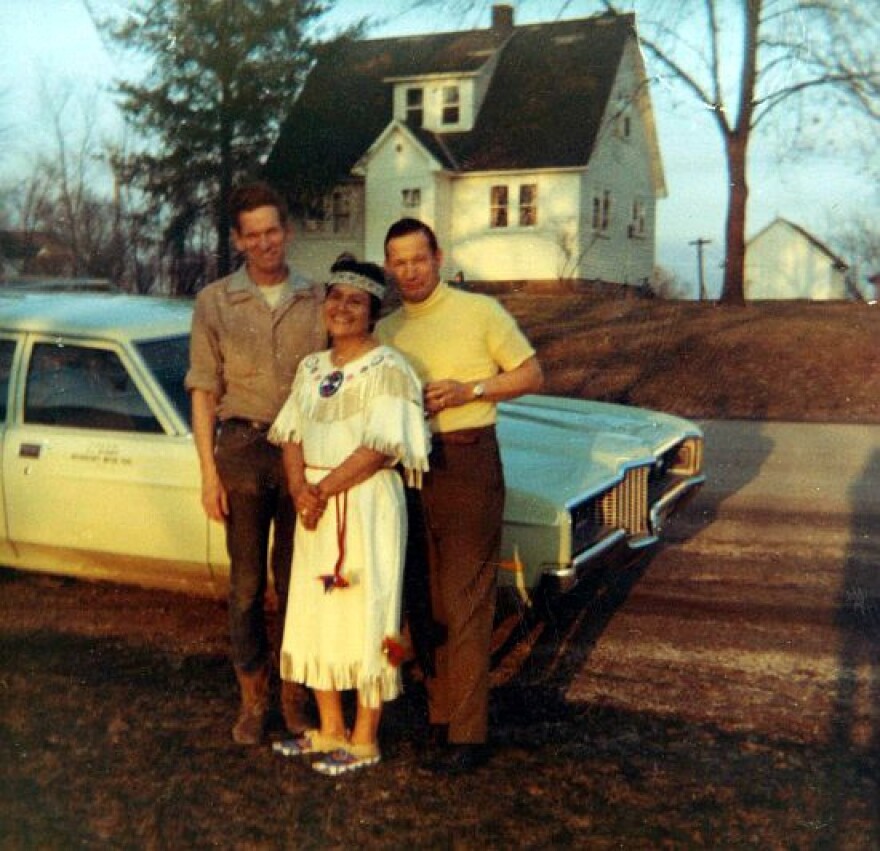It’s the summer of 1971, on Highway 34, southwest Iowa. Some big digger, a lumbering monster doing the dirt work for road construction--maybe they were going to widen the highway—chewed up ground as such monsters do so well. But it stopped, politely, at the graves of 28 people it found in the way.
You can’t just go charging through. Some kind of recovery had to be done.
One of the men running the show, a man named John Pearson, came home that night after work with the news.
Now I don’t know how Mr. and Mrs. Pearson began their late afternoon conversations, but let’s just pretend that Maria, his wife, asked him the standard wifely question: “Well, dear, how was your day?”
Okay, that’s unlikely, given what we know of Maria Pearson. Those who knew her would declare Maria was no June Cleaver, a fact which husband John must have known himself because the story goes he preceded the news of his day with a warning: “Sweetheart, you’re not going to like this.”
And he was right. She didn’t.
Because she didn’t, her world—and his and ours—changed right then.
John Pearson told Maria that his road crew that day had turned up the graves of 28 people, 26 of which were removed and set for reburial at a previously appointed time and place. Two of them were not. The dusty, earthy remains of a mother and child, were sent instead to Iowa City, to the office of the State Archaeologist.
Because they were Indians.
As was Maria Pearson, born and reared on the Yankton Reservation, at Springfield, South Dakota, where, as a member of the Turtle Clan, she was named Running Moccasins; and where her grandmother made sure Running Moccasins learned everything she should know about her people and their ways.
What the Pearsons ate for supper that night didn’t make history, but John wasn’t wrong—Maria got angry, so angry that not all that long afterward she drove to Des Moines in buckskin dress and beaded breastplate, and sat—that’s right, sat--on Governor Robert Ray’s Governor’s Office desk, determined to air her righteous indignation, which she did with all the confidence of Moses: “Governor,” she said, “let my people go.” Or something to that effect.
The particulars of Maria’s Native, animist religious tradition held that the spirit of the deceased neither ascended or descended but lived on—in part—with the bodily remains. Mistreating those remains was mistreating loved ones. It was that simple.
That first trip to Des Moines was the opening volley in a long and trying battle fought by Native people for their own. Here in Iowa in 1976, Maria Pearson led the way through endless conflicts to create legislation to protect Native graves and repatriate the remains of Native people. That Iowa legislation paved the way for federal legislation which created the National American Graves and Repatriation Act (NAGPRA) in 1991.
Maria Pearson used to tell others that her grandmother’s voice came in prairie winds passing through shivering cottonwoods, a voice determined to remind her that she should always stand up for her people.
And that’s exactly what she did in the Governor’s Office and for years afterwards throughout the nation.
“Ultimately, through peaceful means and legal action,” one historian says, “Maria Pearson’s spirit and tenacity became the catalyst of the NAGPRA movement.”
Ten years ago, I was doing a story on a man who farmed the bluffs and bottomland along the Big Sioux, a genial man with bountiful soul beneath a rawhide visage created by a lifetime of hogs and corn and beans. I knew there’d been Indian mounds on his property; I’d seen them drawn into an old map of Sioux County. So I asked him—“Where would I find those things?”
“Oh, we plowed ‘em under long ago,” he told me, as if any farmer in his right mind would have done the same. “Worthless, you know, so they had to go.”
Maria Pearson might have cried. And then screamed.
Maria Pearson was a warrior. She was a hero.
---
Support for Small Wonders on Siouxland Public Media comes from the Daniels Osborn Law Firm in the Ho Chunk Centre in downtown Sioux City, serving needs of clients in real estate transactions; business formation and guidance; and personal estate planning. More information is available on Facebook or at danielsosborn.com.









